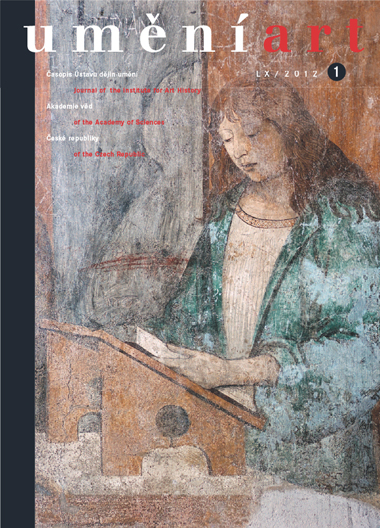Richard Němec
Lucemburská rezidence na Pražském hradě, český korunovační řád a téma appartementu ve 14. století
It is well established in the literature what function the architecture of the royal residence in Prague played structurally and stylistically in the city's urban layout and what its significance was in the concept of rule applied by Charles IV, but the relation between these two aspects has never been studied. Nor has the use of the residence's individual spatial units. Based on stratigraphic measurements, and an analysis of the coronation order (Ordo ad coronandum) the main floor of the residence can be reconstructed as follows: the piano nobile was divided into two parts, each with a different function, one representative (sala Regia) and the other private, and the latter included the privatissima, the bedroom (thalamus), an antechamber (anticamera), and other rooms, including the studiolo. Alongside this spatial composition -appartement - were the liturgical spaces, the Chapel of the Virgin Mary at the south end of the hall and the Chapel of All Saints on the east side. The site's spatial arrangement mirrors the layout of the Papal residence of Benedict XII in Avignon, with two wings adjoining the main hall and with the addition of the liturgical spaces and the studiolo. The concept for the Luxembourg residence in Prague, came from Bishop Jan of Dražice, who was very familiar with the Papal setting and is documented as having introduced the Avignon norms of art into Bohemia. The Prague residence - although as a castle building it de facto represented an outdated type of structure - served as a metaphor for the emergent identity of the territorial ruler as sovereign and the contemporary political situation, in an environment that was shaped by the historical consciousness of the Bohemian nobility and above all by the de facto assertion of their traditional rights. Rule by a Luxembourg dynasty, previously alien to Bohemia and only unwillingly accepted by the provincial elites, was buttressed by ceremony and articulated through an exactly calculated purposeful architecture. The revitalisation of the royal palace provides evidence of the prospective side of Luxembourg rule and can therefore be understood as a unique source through which to examine the dynamically changing dynastic self-representation based on territorial and dynastic tradition.
Full-text in the Digital Library of the Czech Academy of Sciences:
https://kramerius.lib.cas.cz/uuid/uuid:dcb58b5a-387e-37e9-39fe-2323bc7f80c3
< back

